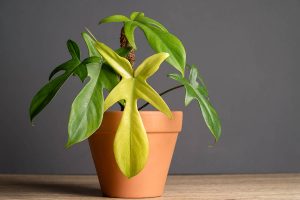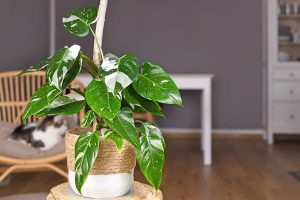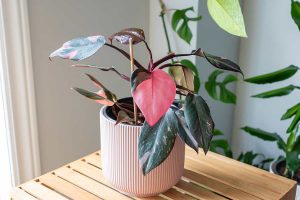Are you ready to transform your living space with the stunning Philodendron gloriosum, known for its large, heart-shaped leaves and dramatic white veins? This guide will walk you through every step of growing and caring for this magnificent plant. By reading this post, you’ll not only learn the ideal conditions for your Philodendron to flourish but also gain tips to keep it healthy and thriving, making it a breathtaking centerpiece in your home or office.
Table of Contents
Light
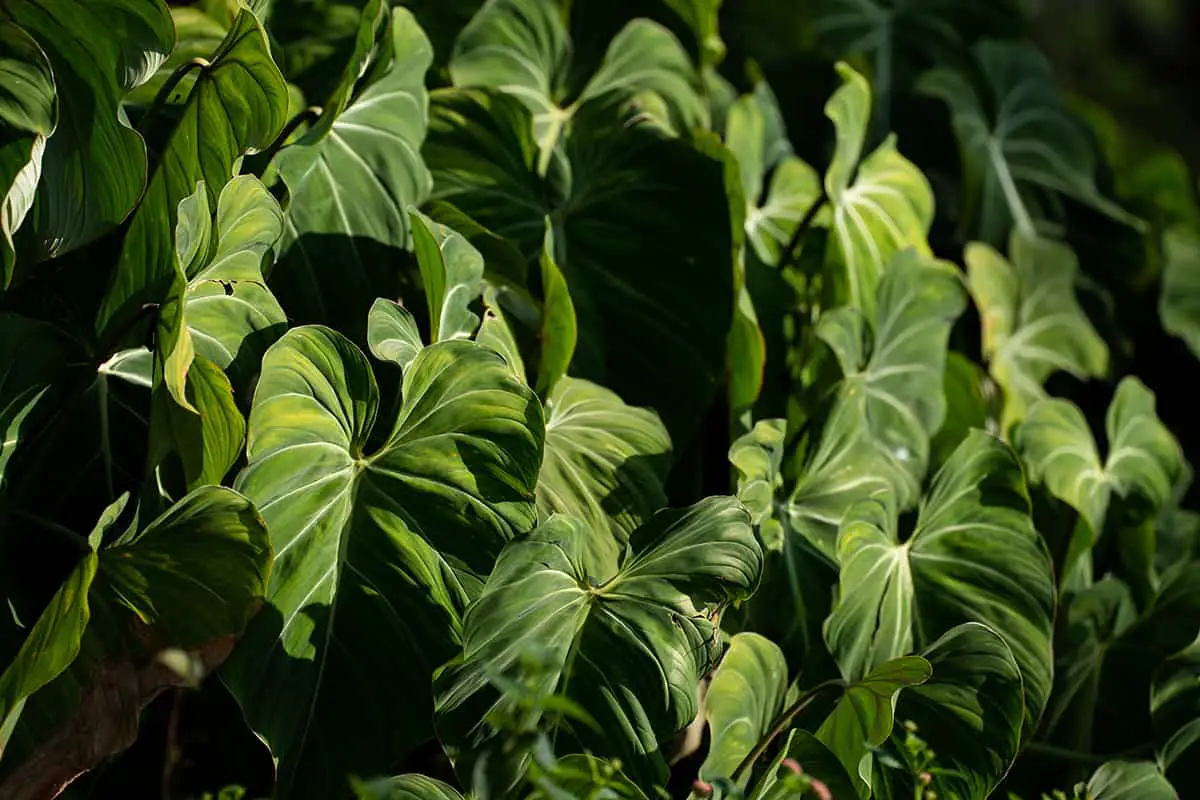
These plants thrive in bright, indirect sunlight. Position your Philodendron Gloriosum near a window that receives plenty of natural light but isn’t exposed to direct sunlight. Exposure to intense direct sunlight can lead to scorched leaves or even stunt the growth of your plant.
Dappled sunlight or filtered light is ideal for this plant. It’s similar to the light that passes through the canopy of a forest, with some spots being brighter and others darker. You can simulate this environment by placing your Philodendron Gloriosum behind a sheer curtain or using a light diffuser.
During the short, gloomy days of winter, your Philodendron Gloriosum might not receive enough natural light. In this case, you can supplement the plant’s light needs with an artificial light source. A fluorescent bulb or LED grow light would work well for this purpose. Ensure the light source is placed at least 12 inches away from the plant to prevent potential damage from overheating.
Soil
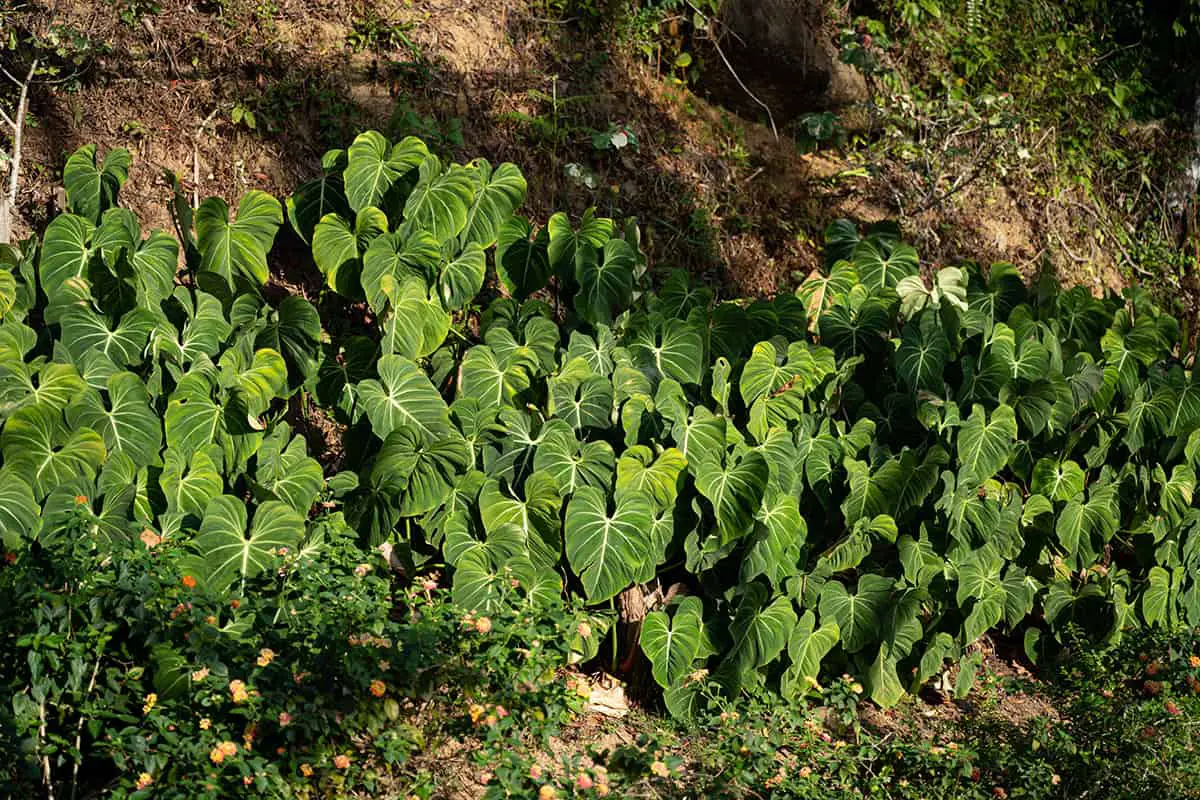
The plant thrives in a well-draining, aerated mix, suitable for tropical plants. You can create a custom mix with all-purpose potting soil, perlite, and peat moss for optimum growth.
The ideal ratio for your Philodendron Gloriosum mix is one part potting soil, one part perlite, and one part peat moss. This combination provides necessary nutrients, enhances drainage, and retains enough moisture for the plant. Also, Philodendrons appreciate a slightly acidic soil, with a pH around 6.0.
Having the right soil conditions not only supports healthy root growth but also prevents issues like root rot. Remember to check your Philodendron Gloriosum’s soil regularly and ensure it doesn’t stay soggy for extended periods. Provide the right balance between moisture and drainage to help your plant flourish.
Watering
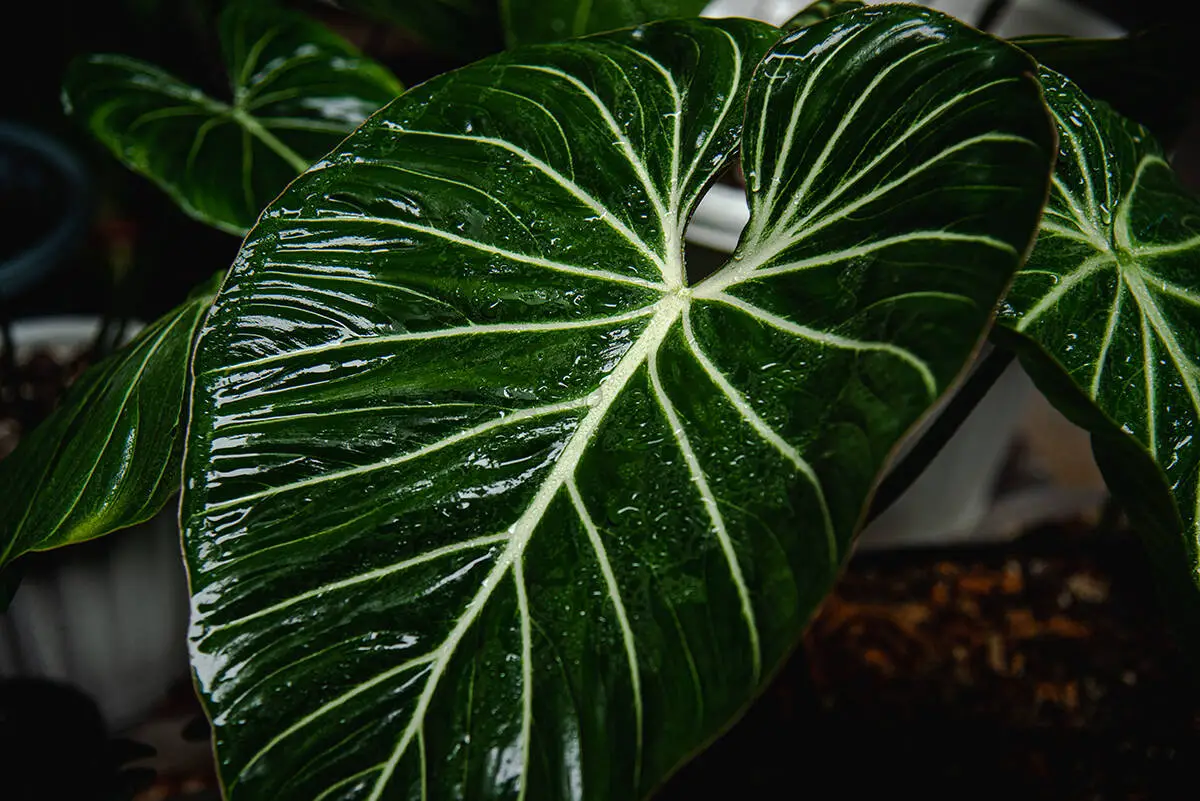
These plants like to maintain evenly moist soil, so make sure to water them when the top layer of the soil feels dry. Water your plant thoroughly, allowing the excess water to drain out of the pot. This ensures that the roots are well-hydrated while avoiding soggy conditions.
To prevent over-watering, avoid letting the plant sit in a saucer of water. Prolonged exposure to soggy soil can lead to root rot and other fungal issues. Instead, always check the soil’s moisture level before watering. You can use your finger or a moisture meter to gauge the soil’s wetness and water accordingly.
Another aspect to consider when watering Philodendron Gloriosum is the quality of the water. Tap water containing chlorine or fluoride can harm the plant’s delicate root system. To avoid this, use filtered water or let tap water sit out for 24 hours before watering, allowing chlorine to evaporate.
Lastly, keep in mind that your Philodendron Gloriosum’s watering needs may change with the seasons. In warmer months, when the plant is growing more actively, you might need to water frequently. On the other hand, during the cooler months, the plant’s growth slows down, and you can reduce watering.
Temperature and Humidity
Philodendron gloriosum thrives in a temperature range of 65-80°F. Keep your plant in a location where it can enjoy stable temperatures. Avoid placing it in areas with sudden temperature fluctuations, like near air conditioners or hot, sunny windows.
For optimal growth, maintain a high humidity level around the plant. Philodendron gloriosum can survive the low-humidity of homes, especially in winter, but you should aim for 60-100% humidity whenever possible. To increase humidity, place a tray of water near the plant or use a humidifier.
Keep the soil consistently moist, but not soggy. When the top layer of soil feels dry to the touch, give your plant some water. Be cautious about overwatering, as it can lead to root rot. Well-draining soil and pots with drainage holes are essential for proper water management.
Provide good air circulation around your Philodendron gloriosum. While it appreciates humidity, stagnant air can lead to fungal diseases. A gentle breeze from a nearby fan or slightly cracked window should do the trick. Just be cautious not to expose the plant to drafts or extreme temperatures.
Fertilizer
To support its growth, use a balanced all-purpose fertilizer during the spring and summer months.
You should fertilize your plant lightly, once or twice a month. The optimal fertilization schedule prevents over-fertilization, which can cause damage to your Philodendron Gloriosum. Maintaining a proper schedule ensures a healthy and thriving plant.
In addition to using the correct type of fertilizer, pay attention to the plant’s desired humidity. While your Philodendron Gloriosum can tolerate low-humidity conditions, creating a higher-humidity environment helps it grow more efficiently.
Consistency is key when it comes to fertilizer and humidity for your Philodendron Gloriosum. Adhering to this regular care routine will result in a lush and vibrant plant that enhances the beauty of your indoor garden.
Propagation
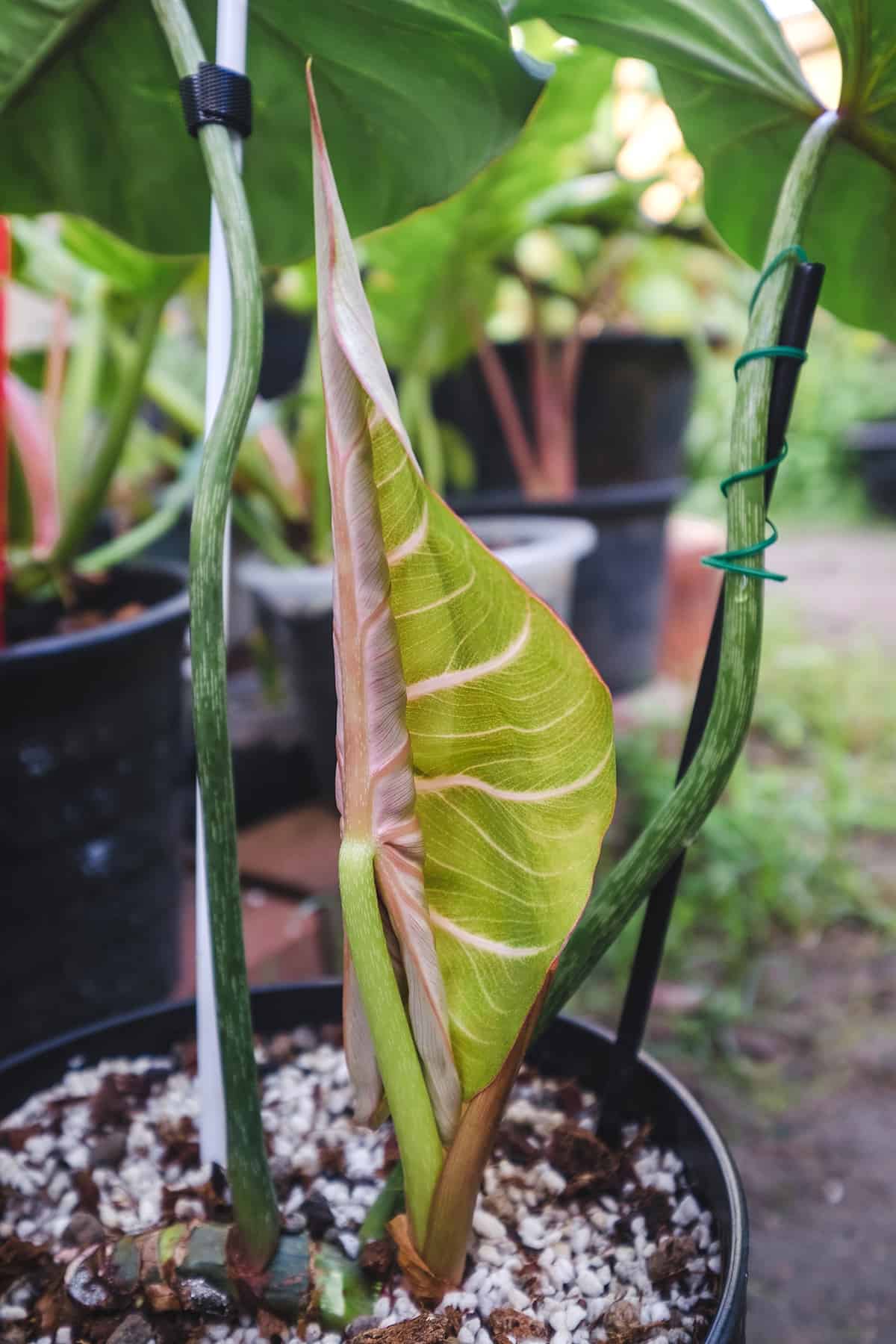
To propagate your Philodendron Gloriosum, opt for stem cuttings. You’ll need sections that are 3 to 6 inches long, with the lower leaves removed. This method allows easy rooting in water or other rooting media such as perlite or well-drained potting soil. Make sure to regularly change the water if you’re using this approach until new roots form that are several inches long . Afterward, you can transfer the cutting to a pot.
For best results, ensure that the cutting has at least one node. Nodes are the points where a leaf is connected to the stem. Here, the roots and new growth will emerge.
Additionally, if you want to use air or simple layering techniques, the process is a bit different but equally effective. For simple layering, bend a branch down to the soil, burying the stem 2 to 4 inches deep, and make sure at least one node is underground .
While rooting your cuttings, keep them in a warm, humid environment. Philodendrons flourish when grown in temperatures between 65 to 80 degrees Fahrenheit and high humidity. Once your cuttings have developed strong roots, transfer them into their own pots and provide optimal care to encourage successful growth.
Pruning
When it comes to pruning your Philodendron Gloriosum, it’s important to know the right technique and timing.
When to Prune
It’s best to prune during the growing season, typically in the spring or summer months. During this period, the plant will recover more quickly from the pruning process, allowing it to continue thriving.
How to Prune
You’ll need a pair of clean, sharp scissors or pruning shears. Look for any yellowing, damaged, or dead leaves that should be removed. Gently hold the leaf you want to prune and cut close to the base, being careful not to damage the adjacent healthy leaves. Removing unhealthy leaves will help the plant focus its energy on new growth. Be sure not to over-prune, as this may cause unnecessary stress to the plant.
Encouraging Fullness
Pruning is not only for removing dead or damaged leaves. You can also prune healthy leaves to encourage bushier growth. This requires careful attention to balance, as over-pruning may lead to a thin, weak plant. A good rule of thumb is to remove only a few healthy leaves per pruning session.
Potting and Repotting
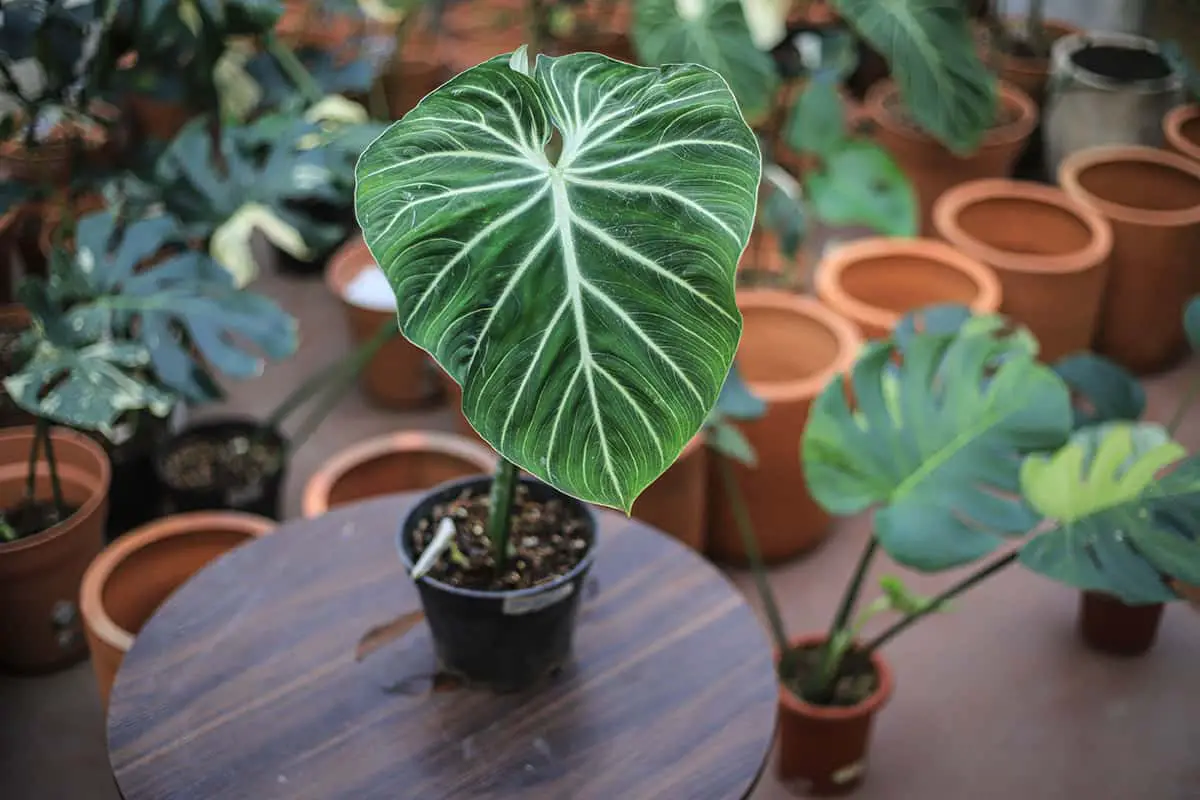
When starting your Philodendron Gloriosum journey, choose a well-draining pot with drainage holes. A suitable potting mix for your plant is light, airy, and well-draining. Ideally, use a mix containing perlite, peat moss, and vermiculite. This combination ensures both excellent drainage and sufficient moisture retention for a thriving plant.
To repot your Philodendron Gloriosum, follow these steps:
- Prepare a new pot: Select a pot that is 1-2 inches larger in diameter than the current pot. Ensure it has drainage holes. Fill the bottom of the new pot with a layer of your potting mix.
- Gently remove the plant: Gently squeeze the sides of the current pot, loosening soil and rootball. Carefully lift your plant by holding the base of the stem, taking care not to damage the roots or leaves.
- Place the plant in the new pot: Position the plant in the center of the new pot. Fill in the remaining space with your potting mix, making sure the roots are completely covered.
- Water thoroughly: Water your repotted Philodendron Gloriosum until the water drains out of the holes. This step helps settle the soil and eliminates air pockets.
Monitor your plant’s growth, and adjust your care routine accordingly. Repotting is needed every 2-3 years or when the pot becomes rootbound.
Common Problems
When growing a Philodendron Gloriosum, you may encounter pests such as mealybugs, spider mites, and scale insects. Wipe the leaves with a damp cloth or use natural insecticides like neem oil to treat these pests.
Another issue with Philodendron Gloriosum is yellowing leaves. This can be caused by overwatering or improper lighting. To prevent this, make sure your plant receives bright, indirect sunlight and allow the soil to dry slightly before watering it again. Also, always provide well-draining soil and avoid waterlogged conditions to prevent root rot.
Sometimes, Philodendron Gloriosum may suffer from nutrient deficiencies. Signs of this include slow growth or discolored leaves. To address this, provide proper fertilization with a balanced, liquid fertilizer once a month during the plant’s active growing season.
Lastly, your Philodendron Gloriosum may contract a plant disease, such as bacterial or fungal infections. These can lead to translucent spots on the leaves, turning reddish-brown with yellow halos. To prevent this, purchase plants free from disease and avoid overhead watering.

